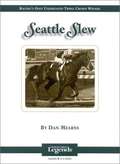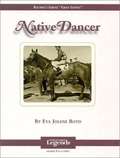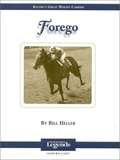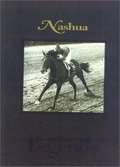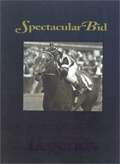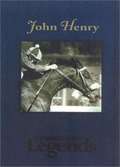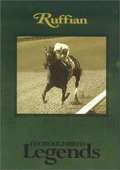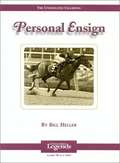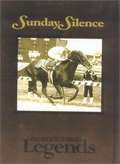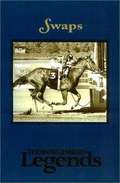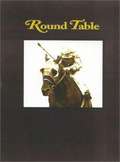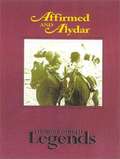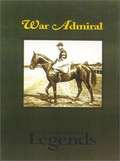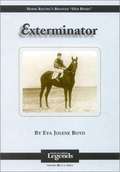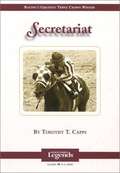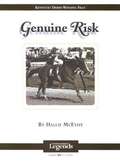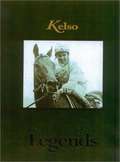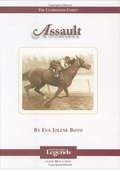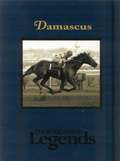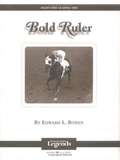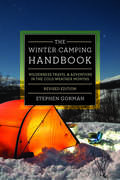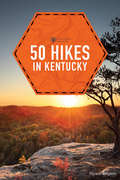- Table View
- List View
Seattle Slew (Thoroughbred Legends #5)
by Dan MearnsSeattle Slew was one of the most popular tourist attractions for racing fans who visit the Kentucky Bluegrass. It is easy to understand why. The dark bay horse carries the special distinction of being the only horse to win the Triple Crown while undefeated. In Seattle Slew, author Dan Mearns, a longtime racing journalist and editor, explores the life of the great horse, who is one of only 11 Triple Crown winners (horses who have won the Kentucky Derby, Preakness, and Belmont Stakes at the age of three) in the history of horse racing. In an indication of how difficult it is to win the coveted Triple Crown, from 1997-99, top horses Silver Charm, Real Quiet, and Charismatic won the first two races only to fail in the Belmont, which is run at a testing 1 1/2 miles. While Seattle Slew's career was filled with many highs like the Triple Crown, there were plenty of lows as well, including his first defeat, the replacement of his trainer, squabbling among his owners, the illness that nearly took his life. However, Seattle Slew was able to overcome all these things to recapture his earlier glory on the racetrack. In retirement he shone even brighter, with many of his offspring becoming champions on the racetrack.
Native Dancer (Thoroughbred Legends #7)
by Eva Jolene BoydKnown as "The Gray Ghost" because of his color and his amazing ability on the racetrack, Native Dancer won all but one of his 22 starts. His lone loss came in the 1953 Kentucky Derby, when he was upset by Dark Star. Native Dancer went on to win the Preakness and Belmont Stakes. But his brilliance was evident even at two, when he won all nine of his starts and was named co-Horse of the Year, an honor not bestowed on a two-year-old horse again until 20 years later, when Secretariat was named Horse of the Year in 1972.
Forego (Thoroughbred Legends #6)
by Bill HellerForego tells the story of the great gelding whose grit and determination on the racetrack captured the hearts of racing fans across the country. Forego raced from the age of three through age eight, winning 34 of his 57 career starts. He earned a record eight Eclipse Awards, the highest honor in horse racing, including three Horse of the Year titles from 1974 to 1976. During his Horse of the Year seasons, Forego became renowned for carrying heavy weights in races, carrying 130 pounds or more in 24 stakes or top-class races. He was elected to the Racing Hall of Fame in 1979. Forego follows the gelding from his beginnings, through his early years on the track, including his effort in Secretariat's Kentucky Derby, and on to stardom. The book looks at Forego's retirement from racing and his life at the Kentucky Horse Park in Lexington, Kentucky, where fans could visit him until his death in 1997. Author Bill Heller also weaves in the stories of Forego's owner, Martha Gerry, and his primary trainers Sherrill Ward and Frank Y. Whiteley, both of whom were inducted into the Racing Hall of Fame.
Nashua (Thoroughbred Legends #8)
by Edward L. BowenNashua, part of the Thoroughbred Legends series from Eclipse Press, is the first book to focus on the life of the charismatic racehorse. Nashua achieved much of his fame on the racetrack thanks to his exciting and well-publicized rivalry with 1955 Kentucky Derby winner Swaps. Nashua was runner-up in that Derby, but the two met again in a nationally televised match race in Chicago. Nashua won and later was named Horse of the Year. Author Edward L. Bowen, who also wrote Man o' War, the first book in the Thoroughbred Legends series, takes the reader through the different phases of Nashua's life -- his early years, his racing career, and his life as a stallion and popular tourist attraction in the Kentucky Bluegrass. Bowen also weaves in the tale of Nashua's owner, William Woodward, Jr., who was fatally shot by his wife in a high-society tragedy that to this day is surrounded by questions. Nashua was subsequently sold in a sealed bid auction after the shooting and made his own headlines by becoming the most expensive horse to be sold up to that point in time. Nashua helps racing fans relive their memories of the great horse or discover him for the first time.
Spectacular Bid: Racing's Horse of Steel (Thoroughbred Legends #9)
by Timothy T. CappsAuthor Timothy T. Capps tells the story of the great racehorse in Spectacular Bid, part of the Thoroughbred Legends series from Eclipse Press. Capps weaves the story of Spectacular Bid with those of his trainer, Bud Delp, a veteran of the Maryland racing circuit, and his owner Harry Meyerhoff, who made the decision to keep his horse in training at four after a top three-year-old season. The author also details the heart-breaking Triple Crown run of Spectacular Bid who could have achieved racing immortality were it not for a loose safety pin in his stall. Bid had already won the Kentucky Derby and the Preakness and looked to be a sure thing in the Belmont Stakes until he stepped on the fateful safety pin prior to the race and ended up third. But Spectacular Bid's career was more than just a missed Triple Crown. He had versatile speed that allowed him to run from anywhere in the field, whether on the lead or far back, and he used his speed to overpower his rivals time and again.
John Henry: Racing's Grand Old Man (Thoroughbred Legends #10)
by Steve HaskinJohn Henry continues to entertain horse racing and sports fans with its true rags to riches tale. A plain brown, small, bad-tempered animal, John Henry was the horse no one wanted until he was purchased sight unseen for $25,000 by Sam Rubin, a man who knew nothing about horses, except which end bit and which end kicked. Entrusted to California-based trainer Ron McAnally, John Henry blossomed into a star. Named Horse of the Year in 1981 as a six years old - an age when most racehorses are enjoying retirement - John Henry continued to race at the top level of the sport through the age of nine, when he was voted Horse of the Year for the second time. He retired as all-time leading money earner in 1984 with more than $6 million and lived the remainder of his life in luxury at the Kentucky Horse Park in Lexington.
Ruffian (Thoroughbred Legends #13)
by Milton C. TobyEven against the backdrop of the seventies, a decade of equine superstars and Triple Crown winners, Ruffian's story stands out as one of the most poignant of her time. This great black filly, often mistaken for a colt because of her impressive size, soared to record-breaking heights. Along the way she garnered a following of both hardened bettors and casual fans. Anyone who ever watched her could not forget her. She was always in front, always dominating the fillies that challenged her. In her short career of eleven races, she was brilliant enough to be compared to Secretariat. Her tragic ending in a match race with Foolish Pleasure that pitted the genders against one another delivered horse racing a tough blow. Not only had a fateful misstep erased a star from the sky, but thousands had witnessed Ruffian's demise from the grandstand or on national television. They left the race with a piece of their hearts missing. Ruffian recounts the amazing career of this charismatic racehorse who set the standard by which all fillies and mares are measured. It also delves into the significant roles played by her trainer, Frank Whiteley; her jockey Jacinto Vasquez; and Stuart and Barbara Janney, her owners and her breeders. Ruffian was ranked No. 35 in The Blood-Horse magazine's list of the Top 100 Racehorses of 20th Century.
Personal Ensign (Thoroughbred Legends #11)
by Bill HellerA racehorse who achieves a perfect record is a rarity, but to do so at the highest levels of the sport is even more rare. It takes a special horse to do that. Personal Ensign is such an animal. She ended her career undefeated in 13 starts and earned more than $1.6 million. But Personal Ensign’s path to perfection was not an easy one. She had to overcome a broken ankle at the age of two to return better and stronger than before. She had to face and beat males. Her defining moment, however, came in her final career start when she came from behind to win the 1988 Breeders’ Cup Distaff by a desperate nose over the Kentucky Derby-winning filly Winning Colors.
Sunday Silence (Thoroughbred Legends #12)
by Ray PaulickSunday Silence started life with the odds stacked against him. He was still a youngster when his breeder decided to sell him, no one wanted to buy him, and a van accident nearly killed him. But Sunday Silence refused to be beaten. Under the tutelage of legendary trainer Charlie Whittingham, the near-black colt showed another facet of the stubborn resiliency that had characterized his early years. Sunday Silence hated to lose on the racetrack. Yet, even after he won the Kentucky Derby and the Preakness Stakes, defeating East Coast golden boy Easy Goer, Sunday Silence had to fight for respect. Only when he won the Breeders' Cup Classic in a heart-stopping finish over Easy Goer did Sunday Silence finally get his due: Horse of the Year honors. But his struggle wasn't over. When an injury cut short his four-year-old season, Sunday Silence returned to his birthplace, Stone Farm in Kentucky to begin a stallion career. But Kentucky breeders wanted nothing to do with the horse. Thus, Sunday Silence was sold to Japan, where he since has become the most successful stallion in history. In Sunday Silence: Thoroughbred Legends #12, author Ray Paulick weaves the improbable tale of this gawky champion with the stories of Kentuckian Arthur Hancock, who ended up buying Sunday Silence by default; trainer Charlie Whittingham, who molded the colt's career; and troubled jockey Patrick Valenzuela.
Swaps: The California Comet (Thoroughbred Legends #14)
by Barry IrwinKentucky Derby winner Swaps possessed true star quality. The strikingly handsome Thoroughbred devastated his competition with his brilliant speed, delighted his throng of fans, and set more records than almost any other racehorse in history. But the real story that captivated a nation and filled headlines in 1956 was the California-bred colt's rivalry with the East's blue-blooded colt, Nashua. All the elements of a blockbuster class struggle played out to the nation's fascination with this true story of two colts, two owners and two competing traditions of Thoroughbred racing: the rich vs. poor, establishment vs. outsider, East vs. West, urban vs. rural, sophisticate vs. common man, sportsmanship vs. commerce, royalty vs. bourgeoisie, and purist vs. unorthodox iconoclast.
Round Table (Thoroughbred Legends #16)
by John McEvoyRound Table was an everyman's horse. In an era when larger-than-life racehorses such as Native Dancer, Swaps, and Nashua became national heroes, Round Table quietly and steadily racked up victories. In Round Table: Thoroughbred Legends #16, longtime editor and writer John McEvoy tells the inspirational story of the horse who gave his all every time. In a career spanning four years, from 1956 to 1959, Round Table raced an amazing sixty-six times, winning forty-three races. He did everything asked of him: he traveled coast to coast, carried weight, stayed, sprinted. He was a Horse of the Year, a handicap champion, and a turf champion. Like a little machine, Round Table would not quit. Although a small, unassuming brown horse, Round Table was regally bred by Kentucky's famed Claiborne Farm. With the death of Claiborne founder A.B. Hancock Sr., Round Table was sold to help pay estate taxes, in essence saving the farm. Under his new owner, Travis M. Kerr, and trainer William Molter, Round Table came into his own, winning races left and right, on dirt or on turf. He is acknowledged as one of the greatest turf runners in the history of the sport.
Affirmed and Alydar: Racing's Greatest Rivalry (Thoroughbred Legends #15)
by Timothy T. CappsThe greatest rivalry in modern racing history began with little fanfare on June 15, 1977. The more experienced Affirmed defeated Alydar, who was making his racing debut in the Youthful Stakes at Belmont Park. In nine subsequent meetings, Affirmed got the better of Alydar six times, often by just inches. Their meetings, especially during the Triple Crown season of 1978, became the stuff of racing lore. Affirmed claimed the Triple Crown, but Alydar tested him to the limits each time in stirring stretch drives that left onlookers limp. Indeed, many racing historians consider their Belmont Stakes to be the greatest race of the 20th century. To tell one’s story is to tell the other’s, so closely intertwined are the lives of Affirmed and Alydar. Author Tim Capps, who witnessed many of the Affirmed-Alydar races, chronicles their early years, first encounters, and epic clashes. He also tells the stories of the people who raised, trained, and rode these titans. Affirmed was bred in Florida by financier Louis Wolfson, trained by the legendary Laz Barrera, and ridden by Steve Cauthen, known as “The Kid.” Alydar entered life on the historic grounds of Calumet Farm in Lexington, Kentucky, the last great horse of the old Wright regime. Trained by the young John Veitch, Alydar would have been a Triple Crown winner in any other year. As a stallion, Alydar surpassed his nemesis although Affirmed found surprising success as a sire of turf horses.
War Admiral: Man O' War's Greatest Son (Thoroughbred Legends #17)
by Edward L. BowenMan o' War didn't compete in the1920 Kentucky Derby because owner Sam Riddle thought the distance was too long for a young three-year-old. But nearly two decades later, Riddle had a change of heart. In 1937, he agreed to run War Admiral, a son of the great Man o' War, at Churchill Downs. War Admiral went on to sweep the Triple Crown and established himself as Man o' War's best racing son. Veteran racing historian Edward L. Bowen, biographer of Man o' War, chronicles the exploits of War Admiral, including the colt's historic battle with the great Seabiscuit and War Admiral's success at stud.
Exterminator (Thoroughbred Legends #18)
by Eva Jolene BoydEven in the time of great horses like Man o' War, Colonel Matt J. Winn, the father of the Kentucky Derby, called Exterminator "the greatest all-around Thoroughbred in American racing history." "Old Bones" as he was called, ran from 1917-1924 and even won the 1918 Kentucky Derby. Gelded as a two-year-old, Exterminator was purchased as a work mate for Willis Sharpe Kilmer's Kentucky Derby hopeful, Sun Briar. However, Sun Briar never made it to the Derby, and Exterminator went in his place. The rest, as they say, is history. Exterminator went on to race 100 times, finishing in the money 84 times. He died in his stall in 1945 and was inducted into the Racing Hall of Fame in 1957.
Secretariat (Thoroughbred Legends #19)
by Timothy T. CappsOn June 9, 1973, the entire world was witness to one of the greatest performances not only in racing, but in all of sports. The great Secretariat was attempting to become the first Triple Crown winner since Citation in 1948. For 25 years the racing world had waited for a champion worthy of the coveted Triple Crown, and on this day, they were not disappointed. After a record setting time of 1:59 2/5 in the Kentucky Derby and an unofficial record time of 1:53 2/5 in the Preakness, Secretariat was far and away the favorite to win the Belmont stakes. While 67,605 people watched from the stands and millions more watched on television, announcer Chic Anderson made one of the most famous calls in sports history: "Secretariat is blazing along! The first three-quarters of a mile in 1:09 4/5. Secretariat is widening now. He is moving like a tremendous machine!" Secretariat shattered the track and stakes record in the one and half-mile race and drew tremendous praise and fame for his Triple Crown performance.
Genuine Risk (Thoroughbred Legends #20)
by Hallie McEvoyShe was a classic diva. Brassy, beautiful, and bold, Genuine Risk did things her way, from taking on the boys on the racetrack to making her owners, caretakers, and fans wait thirteen years before she had a baby. On May 3, 1980, Genuine Risk became the second filly ever to win the Kentucky Derby, and she did it with style, grabbing the lead with a quarter-mile to run and holding it to the finish. In the Preakness she endured a rough trip, including bumping and being hit with another jockey’s whip, only to come up short. A second in the Belmont Stakes gave her the best finish by a filly in all three Triple Crown races. In this newest Thoroughbred Legends volume, author Hallie McEvoy tells Genuine Risk’s compelling story, including the great expectations for her as a mother, the intense disappointment year after year when she failed to produce a foal, and the overwhelming joy when she finally gave birth to a colt named Genuine Reward.
Kelso (Thoroughbred Legends #21)
by Steve HaskinNo racehorse of modern times was so good for so long. Racing until the age of nine, Kelso won thirty-nine of sixty-three races. This superstar of the 1960s earned an unprecedented five Horse of the Year titles, five divisional championships, set or equaled eight track records, and set three American standards. Much like Seabiscuit thirty years earlier, Kelso kept getting better as he got older, earning legions of fans with every passing year.
Assault (Thoroughbred Legends #23)
by Eva Jolene BoydNo stranger to adversity, Assault never backed down from a fight, whether overcoming a devastating injury as a baby or battling to the wire for a victory. Born in the unforgiving brush country of South Texas on the famed King Ranch, Assault showed his tenacity and will early on. As a foal, he stepped on a surveyor's spike, piercing his front right hoof. Assault recovered; however, the injury left his foot deformed and he forever walked with a limp. But when he ran, Assault showed no trace of his injury as he galloped down the homestretch. Trained by Texan Max Hirsch, Assault as a three-year-old in 1946 launched a powerful attack on his rivals. He swept the Kentucky Derby, Preakness and Belmont to become the seventh Triple Crown winner and earned Horse of the Year honors after running in an impressive fifteen starts that year. Author Eva Jolene Boyd, who brought the stories of Native Dancer and Exterminator so vividly to life, does so again with Assault. She recounts his incredible story from a foal who nearly died to a champion who became an inspiration for a nation.
Damascus (Thoroughbred Legends #22)
by Lucy HeckmanDamascus ranked as one of the superstars of the memorable era of horse racing in the late 1960s. He thrilled fans with his trademark sweeping move on the far turn and relentless stretch run that left his opponents floundering. Damascus was much like the steel blades he was named for —tough and resilient. He could combine devastating power and acceleration to cut down his opponents as he forged his way to victory. Author Lucy Heckman recounts Damascus’ amazing career, including his 1967 championship three-year-old season. That year he faced his toughest opponents, the brilliant Dr. Fager and Buckpasser, in the Woodward Stakes. Called “The Race of the Century,” the Woodward became Damascus’ defining moment as he powered away from his rivals for a breathtaking triumph. Trained by Hall of Famer Frank Whiteley Jr. and ridden by the legendary Bill Shoemaker, Damascus thrilled race goers with his patented stretch runs, his rivalry with Dr. Fager, and most of all, his great courage as he vanquished foe after foe.
Bold Ruler (Thoroughbred Legends #24)
by Edward L. BowenA champion racehorse, Bold Ruler thrilled fans with his speed and courage. But as a sire of runners, Bold Ruler truly reigned. He was America's leading sire a record eight years, with his best offspring being the immortal Secretariat.
The Winter Camping Handbook: Wilderness Travel & Adventure in the Cold-Weather Months
by Stephen GormanA thoroughly updated edition of the classic guide, considered the authoritative resource for winter camping Winter camping has its own special allure: the splendid quiet of a winter forest, the hush of falling snow, the thrill of gliding over ice and snow on skis. From building a snow shelter to traveling comfortably in sub-zero temperatures, The Winter Camping Handbook covers everything you'll need to know in order to enjoy wilderness travel and adventure in the colder months. Extremely user-friendly, the book's step-by-step approach covers everything from choosing a location to explore, selecting teammates, planning the trip, winterizing a travel vehicle, gear selection, making camp, food and nutrition, dealing with winter safety concerns, and even camping with children. Now revised and updated to include tips for using smartphones and the latest GPS navigation, this is the definitive guide to cold-weather hiking and camping.
Vertical Aid: Essential Wilderness Medicine for Climbers, Trekkers, and Mountaineers
by Deb Simon J. Pearce Beissinger R. Bryan Simon Seth C. HawkinsA climbing medicine and wilderness first aid guidebook from a team of proven experts Climbing and mountaineering attracts millions of people around the world each year, but produces a unique set of challenges. The threat of danger is ever present, and professional medical help is often far away. Vertical Medicine Resources is a renowned climbing company providing medical training and consultation. In Vertical Aid, they have produced the most complete guide available for managing both emergencies and chronic injuries sustained during climbs. Researched and developed by professional healthcare providers and alpinists, the book includes helpful illustrations of common procedures and best practices, making it a practical and indispensable companion on any climbing, trekking, or alpine trip. It is replete with real-world-tested strategies, evidence-based medicine, and proven techniques. The diverse author team combines an EMS and emergency physician, a nurse, a physician assistant, and a nurse-trainer, who together have a profound depth of climbing, educational, and medical experience. With its unique combination of authoritative medical information and specific attention to the climbing environment, Vertical Aid is poised to become an authoritative resource for every climber, on every climb.
50 Hikes in Coastal and Inland Maine (5th Edition) (Explorer's 50 Hikes)
by John GibsonA best-selling hiking guide to Maine's most widely traveled region, completely revised and with 10 new hikes Locals and visitors to Maine's beautiful coastline will find miles of satisfying hiking, with outings that range from short walks for families to all-day excursions for serious hikers. Each hike in this guide includes a topographic map, information on difficulty, mileage, and elevation, and a detailed description of the route. An overview chart at the beginning of the book describes the 50 hikes at a glance for easy trip planning.
50 Hikes in Kentucky (2nd Edition) (Explorer's 50 Hikes)
by Hiram RogersStunning hikes and walks in the Bluegrass State This comprehensive guide is the essential companion to any traveler’s journey into the verdant countryside of Kentucky. Take advantage of Hiram Rogers’ robust experience when navigating Kentucky’s rich natural attractions, from the Cumberland Gap through to the towering Black Mountain to the rockhouses and cascades of the Bark Camp Trail. Hikes are organized by distance, difficulty, and natural features—including waterfalls and arches—and paired with succinct but informative notes so you can choose the right trail for you and make the most of your journey. Take the knowledge of a proven hiking veteran with you as you explore all that Kentucky’s nature has to offer. As with all the books in the 50 Hikes series, you’ll find clear and concise directions, easy-to-follow maps, and expert tips for enjoying the most of what you want in a hike—whether it’s stunning lake views, luminous moonrises, or sublime skyscapes framed by the crests of mountains.
50 Hikes in Alaska's Kenai Peninsula (2nd Edition) (Explorer's 50 Hikes)
by Taz TallyA hiking guide to one of Alaska's most stunning outdoor getaways Alaska is vast, wild, and stunningly beautiful—and notoriously difficult to get around. The Kenai Peninsula, with its proximity to Anchorage, is the gateway to the great outdoors of Alaska for vast numbers of visitors and locals alike. The Kenai offers coastal, forest, subalpine, tundra, and even glacial hiking opportunities accessible to most. The hikes in this book range from an easy half-mile walk through a boggy lowland meadow to more challenging multi-day hikes through mountainous terrain. As with all of the 50 Hikes series, this volume provides the kind of narrative descriptions that allow you to choose which hikes to actually take and equips you with critically acclaimed maps that help you navigate to and from where you are hiking.
